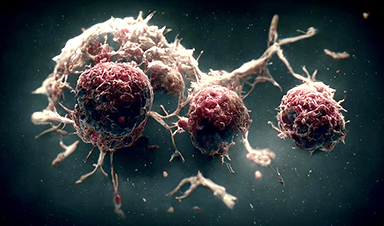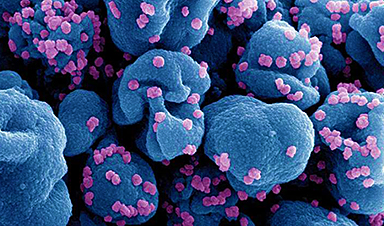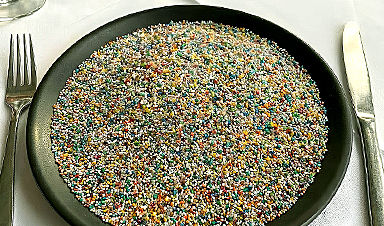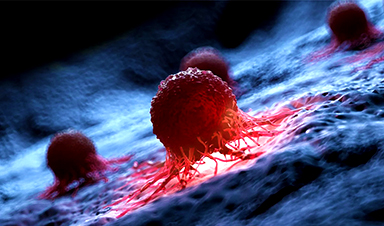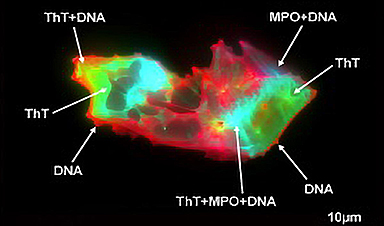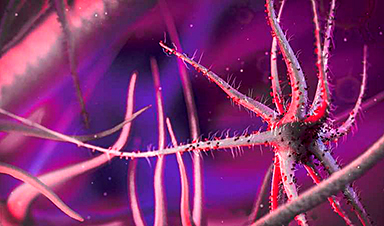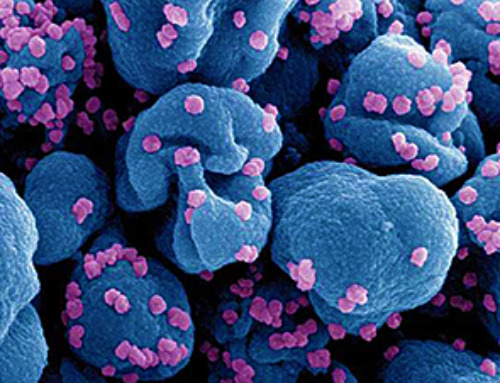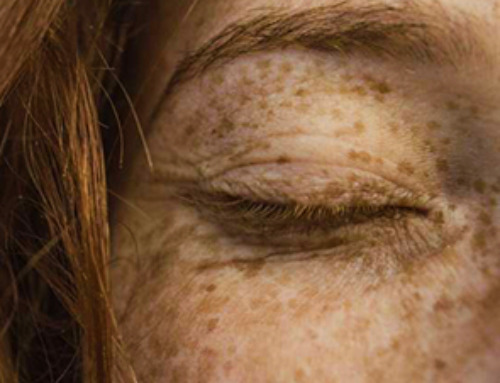Researchers at the Francis Crick Institute and UCL have analyzed ancient DNA from Borrelia recurrentis, a type of bacteria that causes relapsing fever, pinpointing when it evolved to spread through lice rather than ticks, and how it gained and lost genes in the process.
This transition may have coincided with changes in human lifestyles, like living closer together and the beginning of the wool trade.
Borrelia recurrentis bacteria cause relapsing fever, an illness with many recurring episodes of fever, which is typically found today in areas with poor sanitation or overcrowding, such as refugee camps. It is a distant cousin of the bacteria that today cause Lyme disease.
Historical records in Britain have referred to periods of a ‘sweating sickness’ or ‘epidemic fever’ which may have been caused by B. recurrentis, but limited data means the likely cause of these outbreaks remains unknown.
Only three known species of bacteria, including B. recurrentis, have transitioned from being carried primarily by ticks to lice, changing the potential severity of the disease. Until now it was unknown when B. recurrentis made the jump from ticks to lice and what impact this had on disease transmission and severity in humans.
In research published today in Science, the scientists sequenced the whole genome from four samples of B. recurrentis. Ranging from 2,300 to 600 years ago, their samples include the oldest B. recurrentis genome to date. These ancient samples were obtained from the skeletons of people who were infected hundreds of years ago. The DNA is a shadow of the bacteria that once circulated in their blood and has been captured in bones and teeth.
The individuals’ teeth contained traces of B. recurrentis DNA. Two samples had relatively high amounts of the pathogen, suggesting these individuals may have died from a severe, acute infection, or that the DNA was particularly well preserved.
Becoming adapted to the human louse
The researchers looked at differences in the ancient genomes and modern-day B. recurrentis to map how the bacteria has changed over time, finding that the species likely diverged from its nearest tick-borne cousin, B. duttonii, about 6,000 to 4,000 years ago.
The perfect conditions
Based on these ancient and modern genomes, the divergence from the bacteria’s tick-borne ancestor happened during the transition from the Neolithic period to the Early Bronze Age. This was a time of change in human lifestyles, as people began to domesticate animals and live in more dense settlements. This may have helped B. recurrentis spread from person to person more easily.
The researchers also raise the possibility that the development of sheep farming for wool at this time may have given an advantage to louse-borne pathogens, as wool has better conditions for lice to lay eggs.
They conclude that the evolution of B. recurrentis highlights that a combination of genetic and environmental changes can help pathogens spread and infect populations more easily.
Louse-borne relapsing fever is a neglected disease with limited modern genomes, making it difficult to study its diversity. Adding four ancient B. recurrentis genomes to the mix has allowed us to create an evolutionary time series and shed light on how the genetics of the bacteria have changed over time. Although there’s a trend towards genome decay as it adapted to the human louse vector, we’ve shown that the evolution of B. recurrentis was dynamic until about 1,000 years ago, when it looks similar to present-day genomes.”
Pooja Swali, Research Fellow at UCL, former Crick PhD student and first author
Pontus Skoglund, Group Leader of the Ancient Genomics Laboratory at the Crick, and co-senior author, said: “Ancient DNA can enhance our understanding of significant but understudied diseases like relapsing fever. Understanding how bacteria such as B. recurrentis became more severe in the past may help us understand how diseases could change in the future. The time points we’ve identified suggest that changes in human societies such as new clothing material or living in larger groups may have allowed B. recurrentis to jump vectors and become more lethal, an example of how pathogens and humans have co-evolved.”
Lucy van Dorp, Group Leader at UCL, and co-senior author, said: “Genetic analysis of these infections in ancient humans has allowed us to directly track how B. recurrentis has juggled loss and gain of genes during its evolution. Its ability to spread and cause disease appears to be context-dependent, with ancient DNA allowing us to speculate on the important role of past human interactions and behaviour in creating conditions conducive to disease spread. More samples will help us to narrow down the events which led to this tick-to-louse transition and the genetic mechanisms which have helped the bacteria thrive using either vector.”
Swali, P., et al. (2025) Ancient Borrelia genomes document the evolutionary history of louse-borne relapsing fever. Science. doi.org/10.1126/science.adr2147.
News
Scientists Melt Cancer’s Hidden “Power Hubs” and Stop Tumor Growth
Researchers discovered that in a rare kidney cancer, RNA builds droplet-like hubs that act as growth control centers inside tumor cells. By engineering a molecular switch to dissolve these hubs, they were able to halt cancer [...]
Platelet-inspired nanoparticles could improve treatment of inflammatory diseases
Scientists have developed platelet-inspired nanoparticles that deliver anti-inflammatory drugs directly to brain-computer interface implants, doubling their effectiveness. Scientists have found a way to improve the performance of brain-computer interface (BCI) electrodes by delivering anti-inflammatory drugs directly [...]
After 150 years, a new chapter in cancer therapy is finally beginning
For decades, researchers have been looking for ways to destroy cancer cells in a targeted manner without further weakening the body. But for many patients whose immune system is severely impaired by chemotherapy or radiation, [...]
Older chemical libraries show promise for fighting resistant strains of COVID-19 virus
SARS‑CoV‑2, the virus that causes COVID-19, continues to mutate, with some newer strains becoming less responsive to current antiviral treatments like Paxlovid. Now, University of California San Diego scientists and an international team of [...]
Lower doses of immunotherapy for skin cancer give better results, study suggests
According to a new study, lower doses of approved immunotherapy for malignant melanoma can give better results against tumors, while reducing side effects. This is reported by researchers at Karolinska Institutet in the Journal of the National [...]
Researchers highlight five pathways through which microplastics can harm the brain
Microplastics could be fueling neurodegenerative diseases like Alzheimer's and Parkinson's, with a new study highlighting five ways microplastics can trigger inflammation and damage in the brain. More than 57 million people live with dementia, [...]
Tiny Metal Nanodots Obliterate Cancer Cells While Largely Sparing Healthy Tissue
Scientists have developed tiny metal-oxide particles that push cancer cells past their stress limits while sparing healthy tissue. An international team led by RMIT University has developed tiny particles called nanodots, crafted from a metallic compound, [...]
Gold Nanoclusters Could Supercharge Quantum Computers
Researchers found that gold “super atoms” can behave like the atoms in top-tier quantum systems—only far easier to scale. These tiny clusters can be customized at the molecular level, offering a powerful, tunable foundation [...]
A single shot of HPV vaccine may be enough to fight cervical cancer, study finds
WASHINGTON -- A single HPV vaccination appears just as effective as two doses at preventing the viral infection that causes cervical cancer, researchers reported Wednesday. HPV, or human papillomavirus, is very common and spread [...]
New technique overcomes technological barrier in 3D brain imaging
Scientists at the Swiss Light Source SLS have succeeded in mapping a piece of brain tissue in 3D at unprecedented resolution using X-rays, non-destructively. The breakthrough overcomes a long-standing technological barrier that had limited [...]
Scientists Uncover Hidden Blood Pattern in Long COVID
Researchers found persistent microclot and NET structures in Long COVID blood that may explain long-lasting symptoms. Researchers examining Long COVID have identified a structural connection between circulating microclots and neutrophil extracellular traps (NETs). The [...]
This Cellular Trick Helps Cancer Spread, but Could Also Stop It
Groups of normal cbiells can sense far into their surroundings, helping explain cancer cell migration. Understanding this ability could lead to new ways to limit tumor spread. The tale of the princess and the [...]
New mRNA therapy targets drug-resistant pneumonia
Bacteria that multiply on surfaces are a major headache in health care when they gain a foothold on, for example, implants or in catheters. Researchers at Chalmers University of Technology in Sweden have found [...]
Current Heart Health Guidelines Are Failing To Catch a Deadly Genetic Killer
New research reveals that standard screening misses most people with a common inherited cholesterol disorder. A Mayo Clinic study reports that current genetic screening guidelines overlook most people who have familial hypercholesterolemia, an inherited disorder that [...]
Scientists Identify the Evolutionary “Purpose” of Consciousness
Summary: Researchers at Ruhr University Bochum explore why consciousness evolved and why different species developed it in distinct ways. By comparing humans with birds, they show that complex awareness may arise through different neural architectures yet [...]
Novel mRNA therapy curbs antibiotic-resistant infections in preclinical lung models
Researchers at the Icahn School of Medicine at Mount Sinai and collaborators have reported early success with a novel mRNA-based therapy designed to combat antibiotic-resistant bacteria. The findings, published in Nature Biotechnology, show that in [...]

